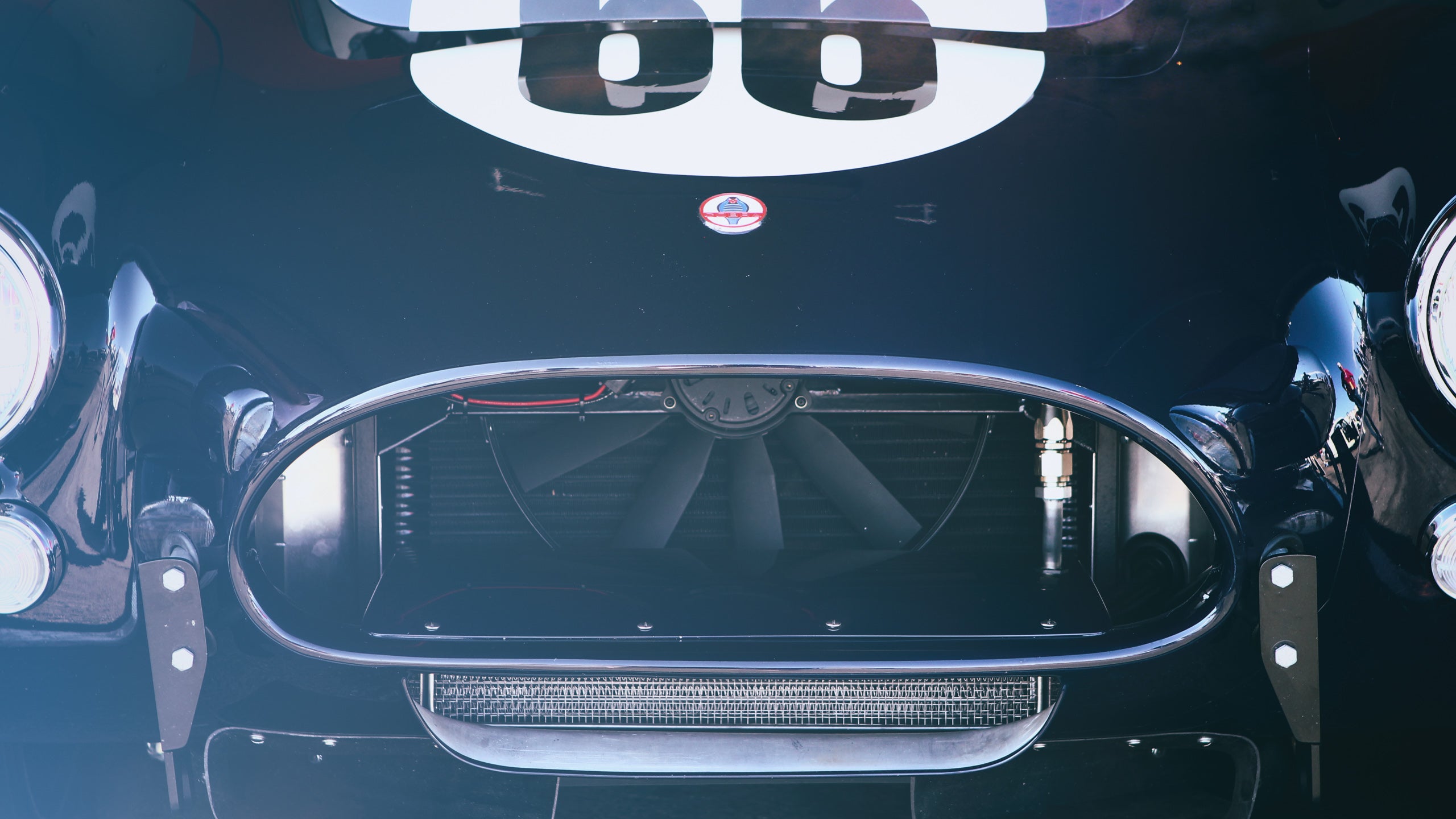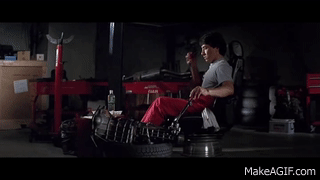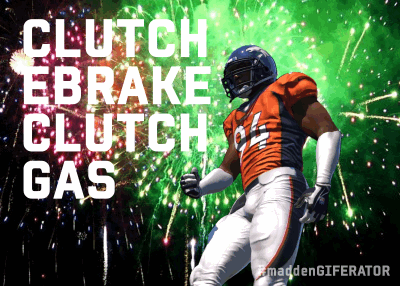 by "Blue 2000" (blue-2000)
by "Blue 2000" (blue-2000)
Published 03/23/2017 at 17:43
 by "Blue 2000" (blue-2000)
by "Blue 2000" (blue-2000)
Published 03/23/2017 at 17:43
Tags: .gif
STARS: 1
Hey oppo, I am looking for a .gif showing the footwork of someone doing a double clutch heel toe down shift. I saw it on here a long time ago but I didnít save it, and I couldnít find it when searching on my own just now.

 "Textured Soy Protein" (texturedsoyprotein)
"Textured Soy Protein" (texturedsoyprotein)
03/23/2017 at 17:46, STARS: 2
Double clutching and heel-toeing is too much damn footwork. No point in double clutching unless youíre driving a gearbox without syncromesh. A single blip to match revs is fine.
 "Urambo Tauro" (urambotauro)
"Urambo Tauro" (urambotauro)
03/23/2017 at 17:52, STARS: 1
Not a GIF, but... like this?
!!! UNKNOWN CONTENT TYPE !!!
 "Nimbus The Legend - Riding on air like a cloud" (nimbus-the-legend)
"Nimbus The Legend - Riding on air like a cloud" (nimbus-the-legend)
03/23/2017 at 17:53, STARS: 1
speaking of, i need to find a way to adjust my pedals in my abarth so i can heel toe easier.
 "MonkeePuzzle" (monkeypuzzle)
"MonkeePuzzle" (monkeypuzzle)
03/23/2017 at 17:55, STARS: 2

 "Blue 2000" (blue-2000)
"Blue 2000" (blue-2000)
03/23/2017 at 18:01, STARS: 1
Post 10 seconds looks like the .gif that I remember.
 "Blue 2000" (blue-2000)
"Blue 2000" (blue-2000)
03/23/2017 at 18:03, STARS: 1
Thanks, Iím pretty certain thatís the .gif that I saw, just without the beginning.
 "McMike" (mcmike)
"McMike" (mcmike)
03/23/2017 at 18:17, STARS: 0
I have never driven anything that required a double-clutch. And Iím 47.
I blame Dom.
 "vicali" (vicali)
"vicali" (vicali)
03/23/2017 at 18:27, STARS: 0
Jackieís faster;

 "Nibbles" (nibbles)
"Nibbles" (nibbles)
03/23/2017 at 18:39, STARS: 0

Wait thatís dorifto
 "Nibbles" (nibbles)
"Nibbles" (nibbles)
03/23/2017 at 19:14, STARS: 1
Shame on you
Granny shiftiní, not double clutchiní like you should
 "ateamfan42" (ateamfan42)
"ateamfan42" (ateamfan42)
03/24/2017 at 15:59, STARS: 0
No point in double clutching unless youíre driving a gearbox without syncromesh.
A lot of synchros donít work great in the cold, especially in the low gears. Shifting into 1st while rolling up to a stop sign before the transmission has warmed up can be downright impossible without manually synchronizing.
Also, taking wear and tear off the synchromesh isnít a bad thing when doing aggressive downshifts (like 6th -> 2nd). Just because double-clutching isnít strictly necesary doesnít mean it has no value.
 "Textured Soy Protein" (texturedsoyprotein)
"Textured Soy Protein" (texturedsoyprotein)
03/24/2017 at 16:14, STARS: 0
Single blip rev matches while heel-toeing or coasting up to a turn already takes most of the work off the syncros. Adding a double clutch to the downshift process is a lot of extra work for not much if any benefit.
If youíre regularly doing things like downshifting into first while moving, you need to reevaluate your driving style.
I suppose dropping from 6th to 2nd while like, trying to nail a turn at the bottom of an offramp could happen on occasion, but in that case you would be better served with single-clutch rev matching into an intermediate gear rather than double-clutching directly from 6th to 2nd.
 "ateamfan42" (ateamfan42)
"ateamfan42" (ateamfan42)
03/24/2017 at 17:03, STARS: 0
Single blip rev matches while heel-toeing or coasting up to a turn already takes most of the work off the syncros. Adding a double clutch to the downshift process is a lot of extra work for not much if any benefit.
How exactly does a rev-match with the clutch disengaged do anything to remove the load on the synchromesh? If the engine is not connected to the transmission, then anything done with the throttle has no effect on the transmission input speed. The synchromesh has to do the work to speed up the input shaft and gearsets whether the throttle is blipped or not in this scenario. The only way to use the engine to change the input speed of the transmission is to engage the clutch, which is precisely the point of double-clutching.
If youíre regularly doing things like downshifting into first while moving, you need to reevaluate your driving style.
What is terrible about using first gear? It is somehow special from the other selection of forward ratios available? Shifting into first while rolling up to a stop sign means the car is ready to take off again if there is no traffic requiring one to wait.
I
suppose dropping from 6th to 2nd while like, trying to nail a turn at
the bottom of an offramp could happen on occasion, but in that case you
would be better served with single-clutch rev matching into an
intermediate gear rather than double-clutching directly from 6th to 2nd.
Iíll admit it is a rare scenario that such a big change in ratio would be appropriate, but my point is that such scenarios can occur. I find it not at all uncommon to drop down 2 or 3 gears transitioning from cruise to full acceleration. There is nothing wrong with stepping down one gear at a time if the driver prefers and has the time to do so. Iím pointing out that isnít strictly necessary, and using double-clutching to negate the need for the synchromesh to do the work is an effective way to extend their life.
 "Textured Soy Protein" (texturedsoyprotein)
"Textured Soy Protein" (texturedsoyprotein)
03/24/2017 at 17:26, STARS: 0
If you single blip rev match correctly, youíll have the engine revs at the point where they need to be for the lower gear, and the syncros wonít have to do much work. Double clutching isnít going to significantly improve their life.
Downshifting into first jerks the car around. Even if youíre just pausing at a stop sign and not waiting at a light, itís smoother to use neutral, either with the clutch or stick, and then only engage first while not moving.
None of what youíve described is efficient driving technique.
 "Textured Soy Protein" (texturedsoyprotein)
"Textured Soy Protein" (texturedsoyprotein)
03/24/2017 at 17:43, STARS: 0
The only time I can think of when I shift into first while moving is like, parking lot speed. Anything else is pointless.
 "ateamfan42" (ateamfan42)
"ateamfan42" (ateamfan42)
03/27/2017 at 08:09, STARS: 0
If you single blip rev match correctly, youíll have the engine revs at the point where they need to be for the lower gear, and the syncros wonít have to do much work. Double clutching isnít going to significantly improve their life.
You really didnít read anything I wrote, did you? Yes, the *engine* revs will be where they need to be. You completely failed to explain how the transmission input and synchros will be at the speed they need to be if the clutch is disengaged. And that is because they wonít! If the transmission is disconnected from the engine (because the clutch is not engaged), then the engine speed doesnít affect the transmission at all. That means the synchromesh has to do the full work of speeding up the input shaft/gearsets to match the output speed.
Downshifting into first jerks the car around. Even if youíre just pausing at a stop sign and not waiting at a light, itís smoother to use neutral, either with the clutch or stick, and then only engage first while not moving.
You just mentioned rev-matching, yet you promptly forget its purpose when you make that statement. The entire point of rev-matching is to smooth the transition into downshifts. A properly rev-matched shift into first will be just as smooth as any other downshift if it is performed correctly.
 "ateamfan42" (ateamfan42)
"ateamfan42" (ateamfan42)
03/27/2017 at 08:11, STARS: 0
Anything else is pointless.
That is the second time in this discussion you have called something pointless without explaining why.
There are plenty of ďpointedĒ reasons to use first gear. If the car is slowed down sufficiently to where first is the appropriate gear to use, then there is absolutely a point to using it. If the driver is seeking maximum acceleration from speeds that are slow enough to use first, then there is a point to using it!
 "Textured Soy Protein" (texturedsoyprotein)
"Textured Soy Protein" (texturedsoyprotein)
03/27/2017 at 11:18, STARS: 0
I read it fine. Youíre mistaken about the amount of work the synchromesh has to do in a single clutch, rev-matched downshift.
And since youíre just so damn set on being argumentative here is all of the technical explanation.
The driveline is comprised of 3 main sections which can spin independently from each other:
Motor + flywheel
Clutch + input shaft + countershaft
Output shaft + driveshaft + differential
When you step on the clutch, this disconnects sections 1 & 2.
When you put the shifter in neutral, it disconnects sections 2 &3.
The different gears affect the ratio of how many turns of the sections 1+2 takes to make one turn of section 3.
When one or more of these sections are disconnected, each of them has momentum. They do not come to an immediate stop.
Letís talk about a downshift from 5th to 4th gear, first with no rev match whatsoever. At first, all 3 sections are spinning at the same speed. Letís just for sake of round numbers say 500 rpm.
Step 1 in a downshift is you step on the clutch to disconnect section 1 from sections 2+3. Sections 2+3 continue spinning at the same 500 rpm because they are still connected.
Step 2 is moving the shifter into the lower gear. Because of the lower gear ratio, sections 1 and section 2 will need to spin at a higher speed relative to section 3. The synchromesh on the lower gear (which is part of the output shaft) starts increasing the speed of section 2.
Step 3 is letting out the clutch. The car lurches because sections 1 + 2 are spinning too slow relative to section 3, and the stepping off the clutch slams them all together. You have a mix of the synchromesh trying to speed up section 2 as the shifter reconnects it with section 3, and the clutch trying to speed up section 1 as it first slips and then grabs. None of which is smooth.
When you single-clutch rev match, youíre getting section 1, but not section 2, to match up the speed of the lower gear. So yes, the synchromesh still has to do some work to speed up section 2 to match section 3.
But, not much work.
The synchromesh only needs to act to synchronize sections 2 and 3 while youíve still got sections 1 and 2 disconnected. As soon as you step off the clutch, the clutch takes over the job of speeding up section 2. Section 1, since it includes the motor, can easily speed up the much smaller rotational mass of section 2. Because section 2 has much lower rotational mass than section 1 or 3, for the brief moment between when you move the shifter into the lower gear and when you let out the clutch, youíre not putting significant wear on the synchromesh before the clutch takes up the job of speeding up section 2.
Point being, a single clutch rev-matched downshift is already taking a lot of the wear off the synchromesh. It no longer has to do much of anything.
Yes, a double clutch rev-matched downshift will in theory perfectly synchronize all 3 sections but you are not significantly reducing the amount of wear on the synchromesh over a single clutch rev-matched downshift.
Now on to first gear. First gear often has a very large difference in ratio to second, and a weaker, or no synchromesh.
If you downshift into first, you have to rev the hell out of the motor to match the revs. The very short 1st gear ratio, practically speaking, is only useful for pulling away from a dead stop.
Sure, if for some reason you needed to come to a near-but-not-full stop and then need maximum acceleration, then it would make sense to fully rev-match a downshift into first. But thatís such an out-there scenario that practically speaking, it would rarely if ever happen.
 "ateamfan42" (ateamfan42)
"ateamfan42" (ateamfan42)
03/27/2017 at 13:25, STARS: 0
And since youíre just so damn set on being argumentative here is all of the technical explanation.
Having this detailed explanation is great, because I can point out exactly where we disagree.
Step 2 is moving the shifter into the lower gear. Because of the lower gear ratio, sections 1 and section 2 will need to spin at a higher speed relative to section 3. The synchromesh on the lower gear (which is part of the output shaft) starts increasing the speed of section 2.
Right there is the heart of it. When the shifter is moved into gear, the synchromesh is doing all the work it is ever going to do during this shift. As you said, the work is done to increase the speed of section 2. Once that happens and the selected gear is engaged,
the synchroís job is completed
. The shift has been synchronized and all the wear is over. So long as the clutch is disengaged, the driver can do whatever he/she wants to with the throttle, nothing is affecting the synchromesh.
As soon as you step off the clutch, the clutch
takes over the job of speeding up section 2. Section 1, since it
includes the motor, can easily speed up the much smaller rotational mass
of section 2. Because section 2 has much lower rotational mass than
section 1 or 3, for the brief moment between when you move the shifter
into the lower gear and when you let out the clutch, youíre not putting
significant wear on the synchromesh before the clutch takes up the job
of speeding up section 2.
This is where the error is. Before the clutch is engaged, section 2 is ALREADY up to speed, because the synchromesh did the work to speed up that section to match the output speed of the transmission. If section 2 wasnít up to the correct speed, the dog teeth for the selected gear would be unable to mesh. The engine is doing nothing to aid in the synchronization of the shift, because that operation was already completed before the clutch was engaged.
It is the mismatch in flywheel speed to clutch speed (the difference between section 1 and 2) is what rev-matching is curing. Blipping the throttle is matching the engine & flywheel speed to the new speed the clutch & transmission input has already reached when the synchromesh did the work of speeding up that rotating mass.
Point being, a single clutch rev-matched downshift is already taking a lot of the wear off the synchromesh. It no longer has to do much of anything.
Without double-clutching, the amount of work the synchromesh has to do is
exactly
the same whether the driver rev-matches or not. Section 1 is disconnected from the transmission during the time the shift is occurring, and so the engine speed has no effect on the synchronization operation.
Yes, the amount of wear is not huge, otherwise transmissions would need rebuilds much more frequently than they normally do. So the advantage of double-clutching to avoid that wear is small, and most drivers choose not to worry about it. But saying single-clutched rev-matching is an equivallent method to avoid that small wear is incorrect, because the rev-matching action cannot perform that function when the clutch is disconnected from the engine.
If
you downshift into first, you have to rev the hell out of the motor to
match the revs. The very short 1st gear ratio, practically speaking, is
only useful for pulling away from a dead stop.
Sure, if for some reason you needed to come to a near-but-not-full stop and then need maximum acceleration, then it would make sense to fully rev-match a downshift into first. But thatís such an out-there scenario that practically speaking, it would rarely if ever happen.
The degree to which 1st is an ďextremeĒ downshift depends on the gearing of the vehicle in question. Some cars can hit 45 mph in 1st, which makes the gear more useful than one that maxs out around 30 mph. Some very tight bends on tracks or autocross courses can necessitate speeds slow enough that first becomes appropriate. Obviously this is quite a bit less common for ordinary street driving.